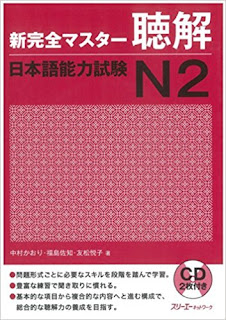Familiarity
It makes a world of difference to be familiar with JLPT-type questions.
The Kanzen Master series and the Soumatome series contain JLPT-type questions. But if you want a single book that contains all JLPT sections, try a mock test (For example, the 公式問題集 book below contains one full test ). Attempting a full test of all sections will help you see if you're answering questions quickly enough.
Time management
Bring a wristwatch to the exam. During the N3, I didn't. I assumed there would be a clock in the exam room, but there wasn't!! (Guess how flustered I was.)
For the N2, my ideal allocation of time was 60-30-10-5.
That's 60 minutes maximum for Reading, 30 minutes for Vocab/Grammar, and 10 minutes for returning to tough questions. The remaining 5 minutes is for shading answers and "spare time." After reading each question, I shaded the corresponding answer.
If you only have 2 minutes left and read every question, stop for a moment to shade all remaining answers -- even if you have to make a wild guess -- and then only return to reading questions.
Don't dawdle. If you're not sure, just pick an answer and move on. Finishing the test on time is your first priority.
I suggest that you tackle Reading first, then Vocab/Grammar.
Reading
The Reading section has fewer questions than the Vocab/Grammar section but each one is worth more points. That's why I start the exam by tackling Reading first (questions 55 to 75).
Kanzen Master's Reading book points out common questions and what keywords to look for. Knowing that helped me read questions more quickly (at a glance, instead of word by word). I didn't go through this book thoroughly -- just enough to get a sense of common questions/keywords.
During the exam, above all, I had to read quickly. Rather than aim for accuracy and detail, I aimed to get the gist of each passage.
Vocab/Grammar
When you begin this section, I recommend starting with Grammar's last 5 questions (questions 50 to 54). They belong to the same passage of text. After that, I would tackle the first 49 questions.
You should be even quicker in this section than in Reading. Don't read word for word. Instead, glance over the sentence to get the gist. Then glance at the possible answers.
Whenever an answer jumped out at me or tugged at my instinct, I circled/shaded it and moved on immediately. To practice answering quickly, I did lots of grammar drills from this book, Nihongo Power Drill:
As for kanji questions, I'm afraid I don't have any advice. Either you know the kanji or you don't, I suppose. However, one guideline that's helped me during hiragana-kanji matching is this: If the hiragana looks familiar but doesn't match the kanji, that hiragana word probably isn't the right answer.
As mentioned in a previous post, I use an app called Skritter to learn kanji and that has been adequate up to the N2 level.
Listening
Take very short notes while listening. By short, I mean one to three keywords from each question. For example, "first", "after this","man", "woman". Many questions are variations of this: "What will he/she do first?"
I practiced with Kanzen Master's Listening book:
Mood
Apart from working on my language skills, I try to create conditions for a positive mood on exam day.
What works for me personally is (a) not cramming the night before, (b) not studying on exam day, and (c) enjoying a reward. I arrived at the test site early to eat my favorite konbini snacks while reading a fun book. I found a quiet spot on the campus lawn with benches, which was calming.
Even if the reduced tension didn't have a significant impact on my exam performance, at least I enjoyed the day more.
Logistics
First, don't be late. Obvious enough, but I tend to be late for things anyway. For the N2, I was lucky that the test site wasn't terribly far away. So I visited the campus in advance to time my 20-minute walk from the train station and scout for quiet spots to eat lunch.
Second, turn off your phone. During my N3, a girl forgot to turn off her phone. During the test, it rang. She was immediately asked to leave. I assume she had to wait another 6 months before taking the test again.
Finally, bring a wristwatch. I've said it before, but it's worth saying again!
Other posts about N2:
JLPT N2 study post-mortem
How I prepared for the JLPT N2
Introducing the JLPT N2



